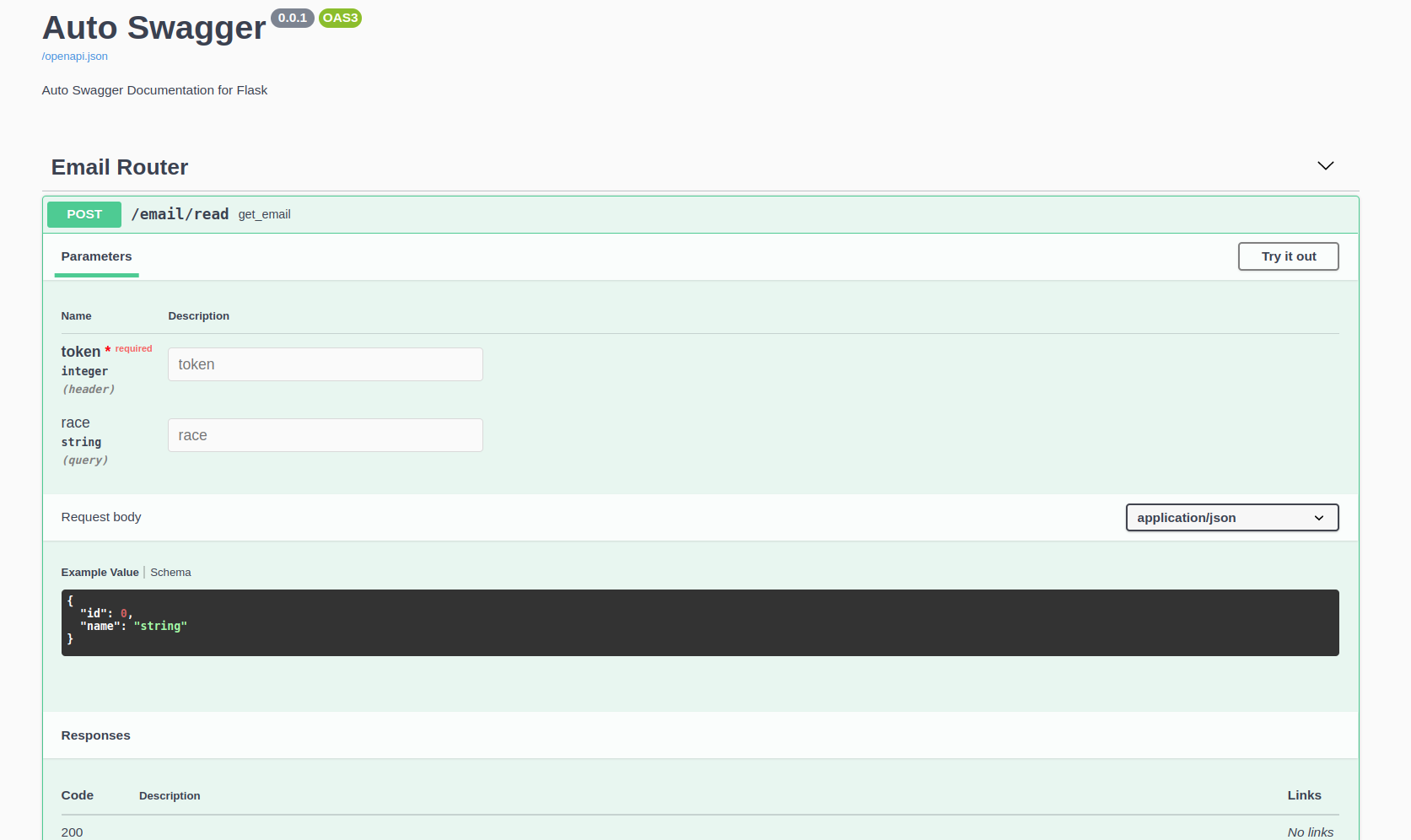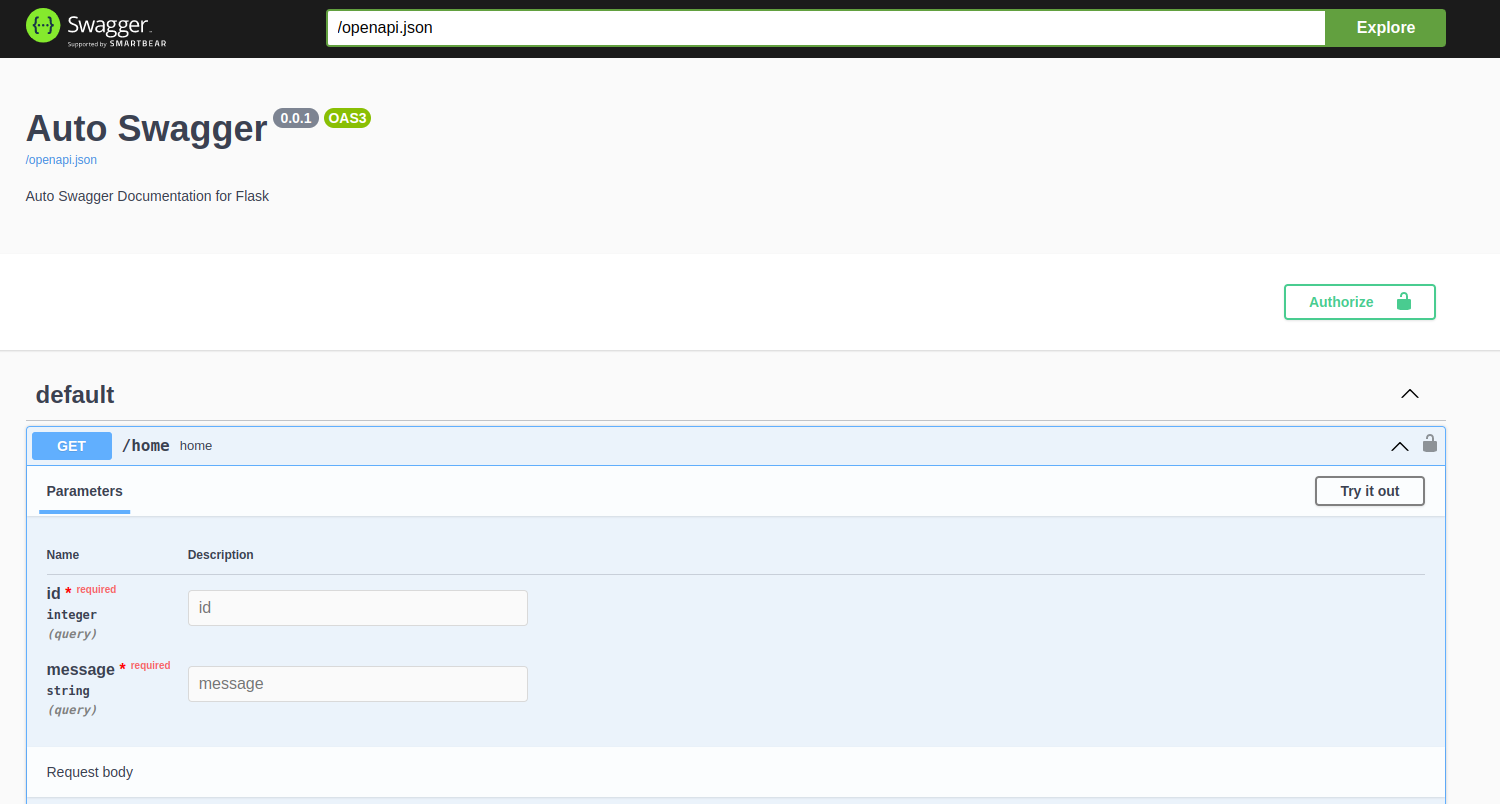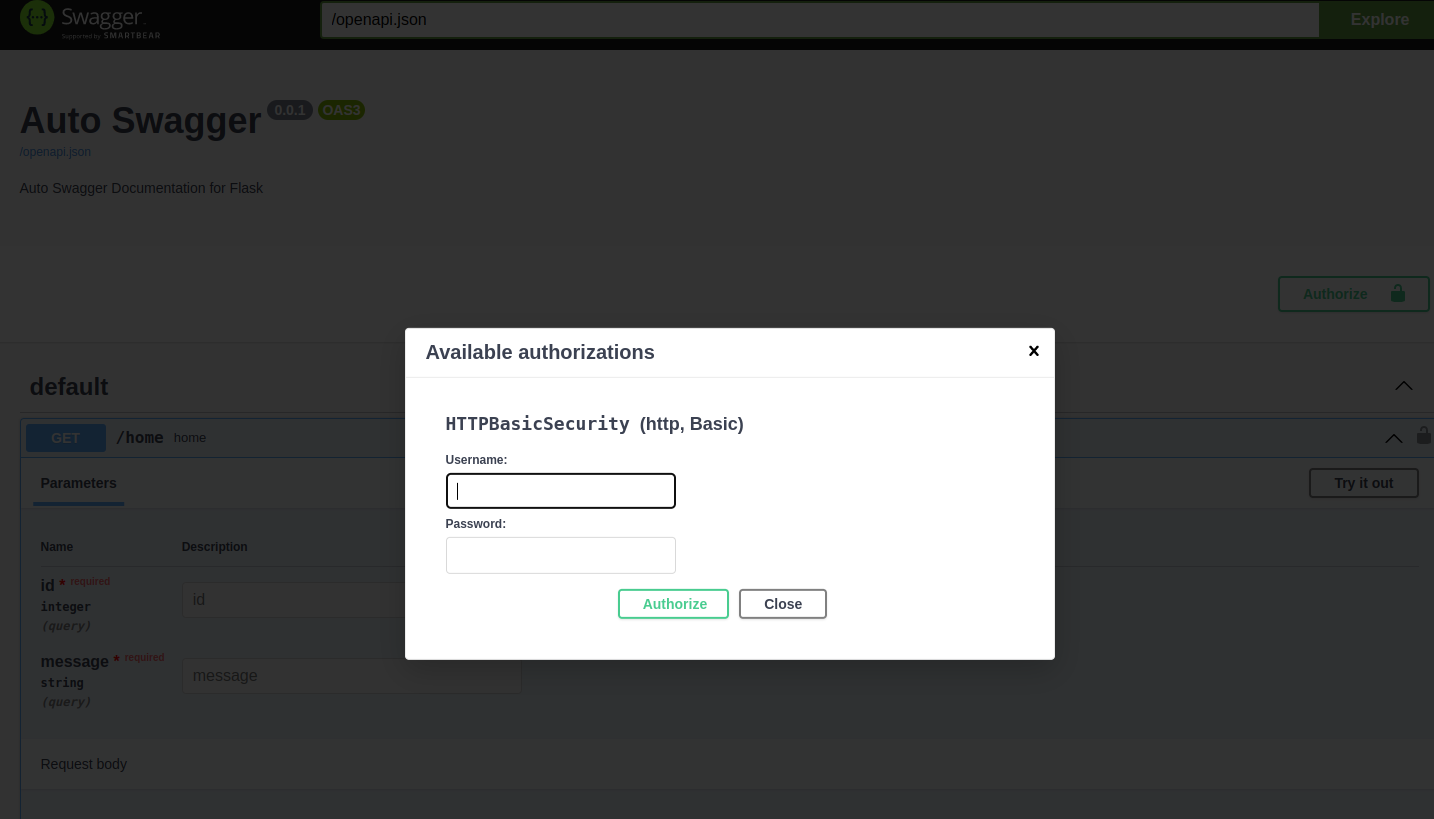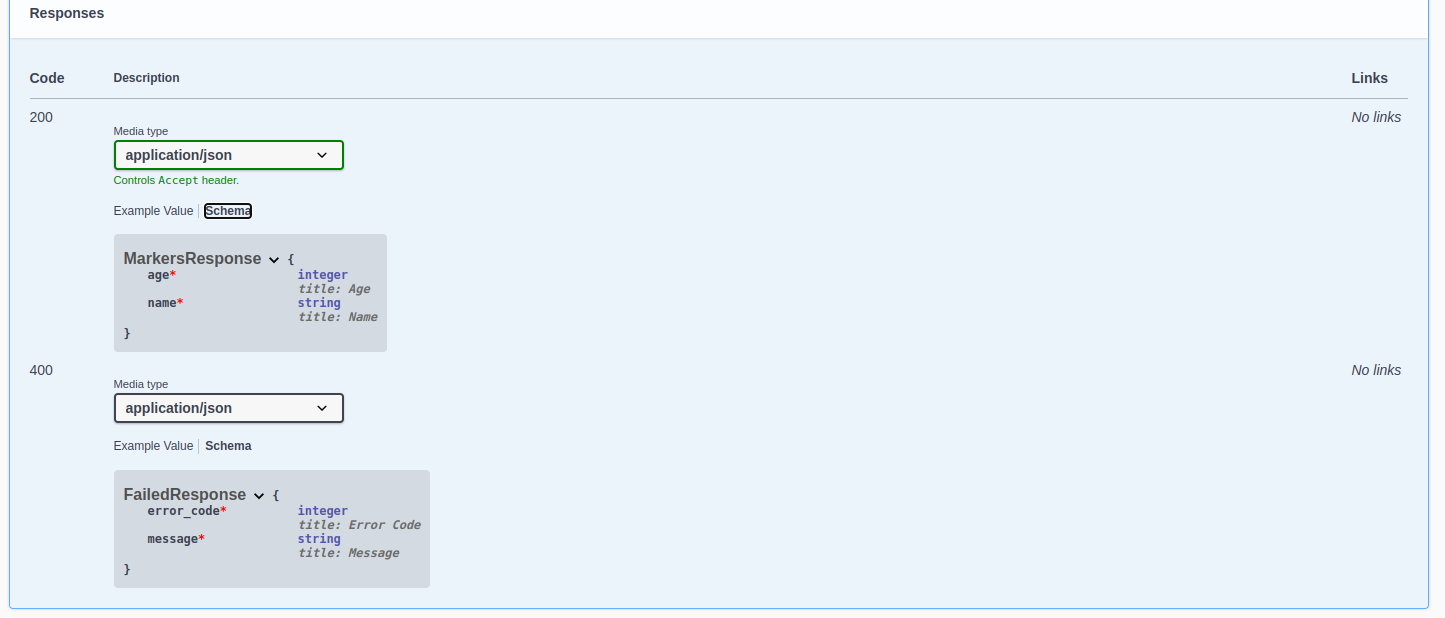# Flask Toolkits
[](https://pepy.tech/project/flask-toolkits)
## Installation
```
pip install flask-toolkits
```
## Description
Flask toolkits implements and provides several features from `FastAPI` like:
- Automatic API documentation (define the function and we'll generate the `swagger`/`openapi` spec for you)
- Passing parameters through `view`/`router` function which is unable in `Flask` before
- Easy Middleware setup
- Parameters and schema validation using `Pydantic`
- Response classes that could return any type of data without worried to get error
- much more..
## Changelogs
- v0.0
- First Upload
- v0.1
- Integration with [flask-http-middleware](https://pypi.org/project/flask-http-middleware)
- [pydantic](https://pypi.org/project/pydantic) support for JSON arguments and validation
- Multiple response type generator
- Added `JSONResponse` class to replace `jsonify` roles in send dictionary data with encoding improvements.
- v0.2
- Supported enumeration API documentation
- Added support for type hint from `typing`'s generic (ex: `Optional`, `Union`, `List`)
- Fixed input parameter validations
- v0.3
- Support `File` and `Form` input parameters validation and automatic swagger.
- Added constraint feature for parameters (ex: limit, max/min length, greater/less than, equals than etc)
- v0.4
- Support `Authorization` header in openapi spec.
- Added `Authorization` processing function for security and can be used as `login` or `auth`.
- v0.5
- Support `add_url_rule` and `route` for endpoint definition
- Support auto swagger for multiple methods in a single endpoints
- v0.6
- Support `alias` on endpoint parameters (path, query, header, etc) to enable
non-pythonic terms of parameter names
- v0.7
- support response structure generator function to helps creating the response schema and examples
## Key Tools inside this `toolkit`
- Automatic API documentation (`swagger`/`openapi`)
- Request-Response direct HTTP middleware (`flask-http-middleware`)
- Automatic parameters validation (`pydantic`)
- Response generator (JSON, Plain Text, HTML)
## Automatic Parameters Validation
The original `Blueprints` class from `flask` can't insert most of arguments inside endpoint.
Here our `APIRouter` allows you to have arguments inside your endpoint
```
from typing import Optional
from flask_toolkits import APIRouter, Body, Header, Query
from flask_toolkits.responses import JSONResponse
router = APIRouter("email", import_name=__name__, static_folder="/routers/email", url_prefix="/email")
@router.post("/read", tags=["Email Router"])
def get_email(
id: int,
name: Optional[str],
):
return JSONResponse({"id": id, "name": name})
```
## Automatic API Documentation
Here our `APIRouter` allows you to auto-documenting your endpoint through `AutoSwagger`.
Define the new router using `APIRouter` class, lets put it in another pyfile
`email_view.py`
```
from typing import Optional
from flask_toolkits import APIRouter, Body, Header, Query
from flask_toolkits.responses import JSONResponse
router = APIRouter("email", import_name=__name__, static_folder="/routers/email", url_prefix="/email")
@router.post("/read", tags=["Email Router"])
def get_email(
id: int = Body(),
name: Optional[str] = Body(None),
token: int = Header(),
race: Optional[str] = Query(None)
):
return JSONResponse({"id":id, "name": name})
```
`main.py`
```
from flask import Flask
from flask_toolkits import AutoSwagger
from email_view import router as email_router
app = Flask(__name__)
auto_swagger = AutoSwagger()
app.register_blueprint(email_router)
app.register_blueprint(auto_swagger)
if __name__ == "__main__":
app.run()
```
then you can go to `http://localhost:5000/docs` and you will found you router is already documented

---
## Supported Field Parameters
`flask-toolkits` provide multiple field parameters such as `Header`, `Query`, `Body`, `Path`, `File`, `Form`
---
## Easy Security Scheme Setup and Documentation
`flask-toolkits` helps you to define your security scheme for authorization easier than before. In advance this also give you automated documentation.
### Basic Usage
lets assume you have your own bearer security schema. You just have to create a new instance of `HTTPBearerSecurity()` to enable automatic documentation on it.
```
from flask import request
from flask_toolkits import APIRouter
from flask_toolkits.security import HTTPBearerSecurity
router = APIRouter("api", __name__)
@router.get("/home", security=HTTPBearerSecurity())
def home(message: str):
if my_security_scheme(request):
return JSONResponse({"message": message})
return JSONResponse({"message": "invalid authorization"})
```
this is how it looks like

on you clicked it

### Define your own security scheme
If you want to define your own security scheme you can follow below guidance
```
from flask import request
from flask_toolkits import APIRouter
from flask_toolkits.security import HTTPBearerSecurity
class JWTBearer(HTTPBearerSecurity):
def __init__(self):
super().__init__()
def __call__(self, req):
data = self.get_authorization_data(req)
if data != "abcdefghij":
raise Exception("This is not good")
return req
router = APIRouter("api", __name__)
@router.get("/home", security=JWTBearer())
def home(message: str):
if my_security_scheme(request):
return JSONResponse({"message": message})
return JSONResponse({"message": "invalid authorization"})
```
Overriding `__call__` method inside the subclass would define your security schema for the routers that are using your security scheme
---
## Define to all endpoints in a router
Just pass it to `APIRouter` and all its endpoint will use that security scheme!
```
router_with_bearer = APIRouter("api", __name__, security=JWTBearer())
```
but don't worries! You can also override it by just defining in the router decorator!
```
@router_with_bearer.get("/home", security=AnotherBearerSecurity())
def home():
return {"message": "hello"}
```
---
## Parameter Alias
In case you have non-pythonic terms with unicode character (-, +, _, =) for your paramter names, you can apply the `alias` into the parameters easily
```
@app.get("/test-alias")
def test_alias(
apikey: str = Header(alias="x-api-key")
):
return JSONResponse({"apikey": apikey})
```
here you will also have your swagger is defined with that `alias`

---
## Response Structure
Creating the response example and schema easily by just defining the class and pass it to `create_response_example` or accessing `as_response()` from `BaseSchema` objects
```
from flask_toolkits.responses import response_json_example
class PersonResponse(BaseSchema):
name: str
age: int
class FailedResponse(BaseSchema):
message: str
error_code: int
@router.route(
'/hello_world/<first>/<int:number>', tags=["My Hello"],
responses={
200: response_json_example(PersonResponse(name="Alex", age=20)),
400: FailedResponse(message="Data not found", error_code=101).as_response()
},
)
def hello_world(
name: str = Query(),
age: int = Query()
):
resp = {
"name": name,
"age": age
}
return JSONResponse(resp)
```


---
## Multiple HTTP Methods in a single endpoint
`add_url_rule` and `route` method for `Flask`'s App or `Blueprints` object are now supported. This also allows you to have multiple HTTP methods in a single endpoint function
```
@app.route("/test-multiple-method", methods=["GET", "POST", "PUT", "DELETE", "PATCH"])
def go_multi_method(
name: str = Body()
):
return JSONResponse({"result": name})
```
Here you will get `null` if you hit it using `GET` but you'll get the value on you hit with other methods that support `Body`. You won't loose your validation since it only applied for methods that support that kind of params.
---
## Request-Response direct HTTP middleware
```
import time
from flask import Flask
from flask_toolkits.middleware import MiddlewareManager, BaseHTTPMiddleware
app = Flask(__name__)
class MetricsMiddleware(BaseHTTPMiddleware):
def __init__(self):
super().__init__()
def dispatch(self, request, call_next):
t0 = time.time()
response = call_next(request)
response_time = time.time()-t0
response.headers.add("response_time", response_time)
return response
app.wsgi_app = MiddlewareManager(app)
app.wsgi_app.add_middleware(MetricsMiddleware)
@app.get("/health")
def health():
return {"message":"I'm healthy"}
```




